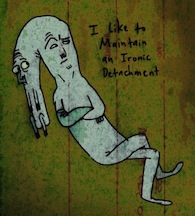 How much are we driven by anxiety, by a desire for security? Karen Horney; 1885–1952, was a German psychoanalyst who postulated in “Neurosis and Human Growth: The Struggle Toward Self-Realization,” that people have three basic coping strategies for the stresses of life.
How much are we driven by anxiety, by a desire for security? Karen Horney; 1885–1952, was a German psychoanalyst who postulated in “Neurosis and Human Growth: The Struggle Toward Self-Realization,” that people have three basic coping strategies for the stresses of life.
– Dominance/Aggression: Some seek a sense of security by outperforming others, submerging their fears of dependence and helplessness via persistent and otherwise unreasonable pursuit of power and prestige. They seek vindication and reject self-doubt and criticism.
– Dependence/Compliance: Others cope by attempting to win over others via compliance and conflict avoidance, surrendering themselves to their relationships. “They praise themselves for their long-suffering forbearance, their willingness to live for others, even though in reality they are just too scared to assert themselves. They think they are behaving selflessly, but they are really using others for whatever drips of affection they can provide.” — David Brooks, The New York Times, October 12, 2012.
– Detachment: Isolation is the coping mechanism. These people move away from others. These detached types try to isolate themselves and adopt an onlooker’s attitude toward life. “To guarantee peace, it is necessary to leave the battleground of interpersonal relationships.” — Terry D. Cooper, “Sin, Pride and Self-Acceptance.”
“They tamp down desire, avoid ambition and minimize conflict and risk. They want to avoid the feeling of needing someone. …(t)he detached person believes that, if he asks nothing of the world, the world will ask nothing of him.” — David Brooks, The New York Times, October 12, 2012.
These three categories are large and obviously overgeneralized. One person may use all three coping styles at different times in his or her life or in different areas of their lives at the same time. Nonetheless, they still provide a useful tool by which to observe and think about the world we live in and our and others’ responses to it.
Extra credit from Wikipedia:
Horney named ten patterns of neurotic needs within her three categories:
Moving Toward People
1. The need for affection and approval; pleasing others and being liked by them.
2. The need for a partner; one whom they can love and who will solve all problems.
Moving Against People
3. The need for power; the ability to bend wills and achieve control over others—while most persons seek strength, the neurotic may be desperate for it.
4. The need to exploit others; to get the better of them. To become manipulative, fostering the belief that people are there simply to be used.
5. The need for social recognition; prestige and limelight.
6. The need for personal admiration; for both inner and outer qualities—to be valued.
7. The need for personal achievement; though virtually all persons wish to make achievements, as with No. 3, the neurotic may be desperate for achievement.
Moving Away from People
8. The need for self sufficiency and independence; while most desire some autonomy, the neurotic may simply wish to discard other individuals entirely.
9. The need for perfection; while many are driven to perfect their lives in the form of well being, the neurotic may display a fear of being slightly flawed.
10. Lastly, the need to restrict life practices to within narrow borders; to live as inconspicuous a life as possible.
Upon investigating the ten needs further, Horney found she was able to condense them into three broad categories:
Compliance Needs one and two were assimilated into the “compliance” category. This category is seen as a process of “moving towards people”, or self-effacement. Under Horney’s theory children facing difficulties with parents often use this strategy. Fear of helplessness and abandonment occurs—phenomena Horney refers to as “basic anxiety.” Those within the compliance category tend to exhibit a need for affection and approval on the part of their peers. They may also seek out a partner, somebody to confide in, fostering the belief that, in turn, all of life’s problems would be solved by the new cohort. A lack of demands and a desire for inconspicuousness both occur in these individuals.
Aggression Needs three through seven were assimilated into the “aggression” category, also called the “moving against people”, or the “expansive” solution. Neurotic children or adults within this category often exhibit anger or basic hostility to those around them. That is, there is a need for power, a need for control and exploitation, and a maintenance of a facade of omnipotence. Manipulative qualities aside, under Horney’s assertions the aggressive individual may also wish for social recognition, not necessarily in terms of limelight, but in terms of simply being known (perhaps feared) by subordinates and peers alike. In addition, the individual has needs for a degree of personal admiration by those within this person’s social circle and, lastly, for raw personal achievement. These characteristics comprise the “aggressive” neurotic type. Aggressive types also tend to keep people away from them. On the other hand, they only care about their wants and needs. They would do whatever they can to be happy and wouldn’t desist from hurting anyone.
Detachment Needs eight through ten were assimilated into the “detachment” category, also called the “moving-away-from” or “resigning” solution or a detached personality. As neither aggression nor compliance solve parental indifference, Horney recognized that children might simply try to become self-sufficient. The withdrawing neurotic may disregard others in a non-aggressive manner, regarding solitude and independence as the way forth. The stringent needs for perfection comprise another part of this category; those withdrawing may strive for perfection above all else, to the point where being flawed is utterly unacceptable. Everything the “detached” type does must be unassailable and refined. They suppress or deny all feelings towards others, particularly love and hate.


0 Comments